There was a lot this week. We have watched the ups and downs of brands, witnessed major decisions and again faced the virus that is raging in China. Let me remind you that it has already had a serious impact on the delivery time of smartphones and the delivery time of goods from Chinese sites. All this was the result of the past week, which will forever remain in history. Let's sum it up and talk about Samsung, Mobile World Congress, Andy Rubin's collapse and more. Welcome to our traditional weekly news release.
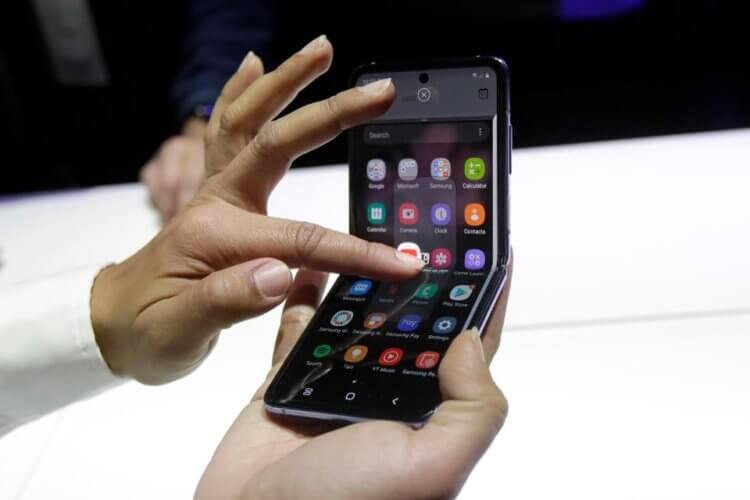
Revolution or not?
Google accidentally lit Android 11. What's new
Despite the fact that the overwhelming majority of users Android live quietly for themselves without updates, many of them are even more happy with the release of new versions than with their own birthday. Why this is happening is difficult to say, but those who are guaranteed not to receive an update still collect leaks and study all the details of the new OS version with such thoroughness as if their future life depends on it. Perhaps this is partly the case, because the accidental launch by Google of a site dedicated to Android 11 caused an incredible storm of emotions.
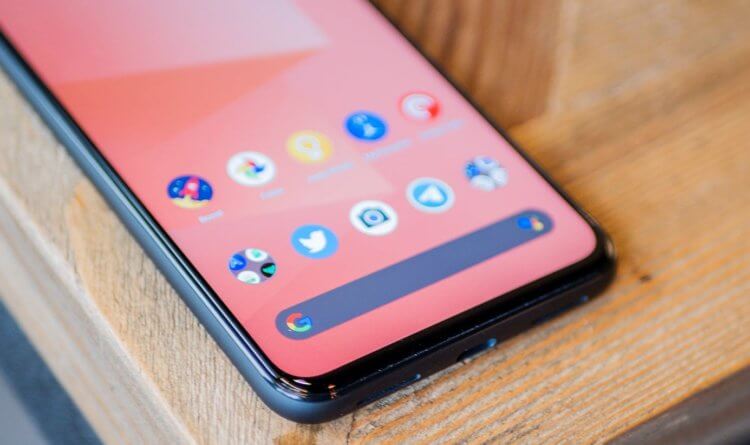
Google already has a website dedicated to Android 11. The only thing left to do is run the beta test
Google has yet to release Android 11, but has already spotted it by accidentally launching a site dedicated to the update. In addition to the name itself and the very fact of the existence of this version of the OS, which is usually kept secret until the moment of the official presentation, the site also revealed key innovations. However, by now Google has already noticed its own mistake and denied access to the site dedicated to Android 11, setting a redirect to the section for Android 10.

Google clearly didn't want to shine Android 11 but it did
- Behavioral changes: the method of processing applications launched under Android 11 will be redesigned;
- Security changes: new tools will be added to ensure the privacy of users and their data;
- System changes: support for new APIs, data exchange tools, and new mechanisms for processing biometric information will be added.
- Interface Changes: In-depth support for smartphones with foldable displays will be added and the method of handling their interface will be improved.
In fact, Google has not disclosed a single specific innovation, limiting itself only to general wording. Nevertheless, from them you can understand in which direction the operating system will develop throughout the next year. Obviously, the developers decided to make the platform, firstly, more secure by integrating additional protective mechanisms, and, secondly, more private, obviously due to new biometric identification tools.
One of the innovations aimed at improving user security, obviously, will be the Scoped Storage mechanism. It will allow you to divide the built-in smartphone storage into several independent cells according to the number of installed applications. They will be isolated from each other and will not allow one program to claim information from another. This is very important, because now there is no such possibility, and malicious software can infringe on confidential information that benign applications have access to.
As for the new biometric mechanisms, it is possible that in this case we are talking about Google's plans to turn smartphones running Android 11 into storage for identity cards and other documentation. After all, for this it is not enough just to teach the system to digitize them, you also need to teach it to confirm their authenticity, not to mention how to protect them from unauthorized access. However, how exactly this will be implemented – and whether it will be at all – is not yet clear.
Google is expected to start beta testing Android 11 this month. Initially, only owners of the flagship Google Pixel smartphones will be able to install the test update on the side, but closer to spring it will become available to a wider range of devices. True, most likely, these will be devices from those manufacturers that are closest to Google, for example, Nokia, OnePlus, Samsung, and so on. During this time, the update will be tested in all planes, which will allow timely identification of all bugs and fix them before the release version is released.
Fortnite Developer Solves Mystery Android
Everyone loves secrets, right? Even if they do not directly concern us, this not only does not make them less interesting, but even strengthens our desire to find out all the ins and outs as detailed as possible. Not necessarily in order to then pass this information on to someone else. After all, awareness is a rather powerful tool that allows us not only to feel our involvement in a specific topic, but also to be able to make decisions that can affect our lives, even if it concerns exclusively our smartphones.
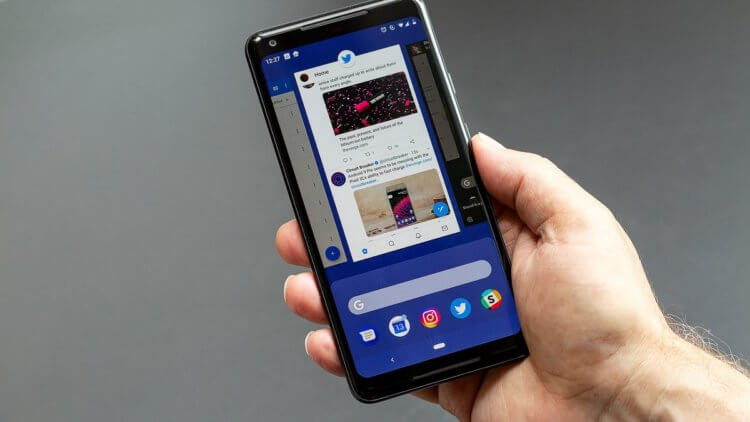
Android is not an open source operating system, whatever Google might think
Android is not a truly open operating system, whatever Google says, said Tim Sweeney, CEO of Epic Games. According to the executive, when they launched Fortnite and decided they would distribute it through their website, they faced a lot of problems. Rather than just letting users download the game without hindrance, Google has started to fix them all sorts of obstacles – from completely blocking downloads to warnings about the incredible danger of software from third parties.
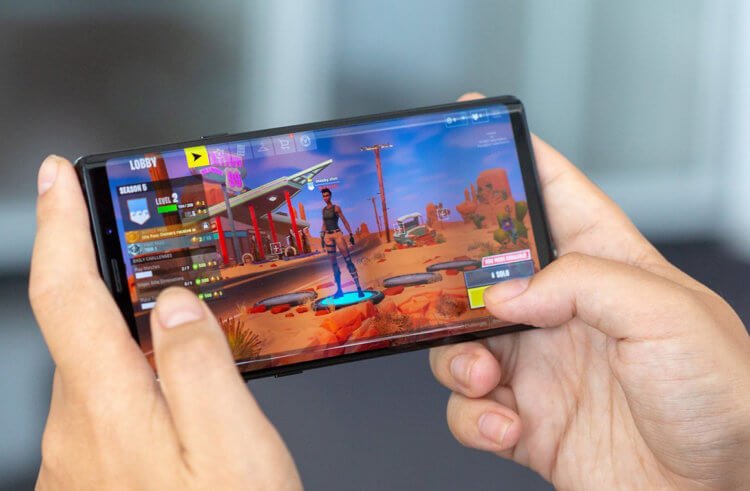
Fortnite didn't make it to Google Play because Epic Games didn't want to pay Google commission
The openness of the operating system is about giving users the ability to use it the way they want, Sweeney explained. Recently, however, Google is increasingly tightening the rules for interacting with the platform, setting various kinds of restrictions that do not allow using all the advantages Android. In fact, the company is following the path Apple, but at least it never declared iOS as an open platform, and from the very beginning it clearly demonstrated to users that it will make all significant decisions for them .
Usually all these restrictions are presented under the guise of protecting users from malware, but in this case, the obstacles have nothing to do with security, Sweeney said. After all, logically, Android should prevent downloads from unreliable sources, but why then does it block all sources at all, even those that are inherently reliable? Google has many ways to check the resource from which the download is carried out, but instead, it simply calls all platforms except Google Play unprotected, and then also recommends that users refuse to install the downloaded application or game.
It is clear that this is done in order to generate additional profit. After all, Google charges 30% for every transaction made through Google Play. And given that Fortnite only generates over $ 2 million in revenue per day on iOS by selling in-game currency, it's easy to guess that Google would also like to bite off this pie. Yes, users Android traditionally spend less money on apps and games than users iOS, but even if it will be the same 2 million per day (by iOS already clearly more), Google could, without lifting a finger, earn 600-650 thousand dollars daily.
As a result, Google categorically refused to place the game in the catalog on individual terms, not meeting Epic Games and not beginning to reduce the commission rate for it. They say there is no reason for that. But it is clear that this was done to put the squeeze on the studio and convince it to host the game on Google Play on Google's own terms. After all, Epic Games itself needs the search giant's directory as much as Google needs Fortnite, because many users still have not dared to download the game due to fears of third-party sources.
Is Tim Sweeney right? Partly yes. However, for some reason he forgets that Android is used not only by geeks who can afford to download software from the Internet without fear, because they are aware of all the risks and take precautions, but also by ordinary users for whom software from third party sources can be dangerous. Indeed, as practice shows, users often download malicious software to their devices, give them the requested privileges, and then wonder why their bank account was robbed, and the entire smartphone interface is riddled with advertising banners. Here they also need to be protected from rash actions, which is what Google does.
Huawei outraged by US government statements
We all know about the conflict between Huawei and the US government, which flared up in the middle of last year and led to the fact that many doors were closed for the Chinese manufacturer to cooperation with American (and not only) companies. While the scandal either intensified or sluggishly flowed, the parties constantly exchanged jabs at each other, and the sanctions were either weakened, then reinforced again. Recently, the US government has once again spoken to the address Huawei. This time, the essence of the accusations came down to the fact that the telecommunications equipment of the latter has a “backdoor” that allows users to gain access to communication.
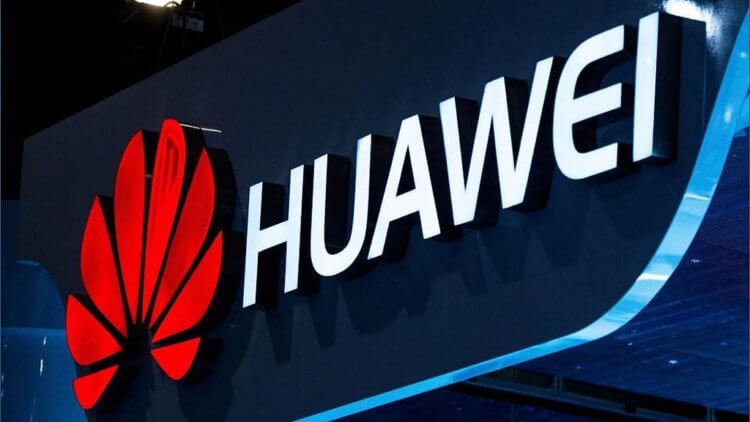
The company does not stop fighting.
To make the conversation more substantive, if you are not aware, let me remind you that Huawei deals not only with smartphones, on the sale of which they have grown very much lately. They had a base that allowed them to reach such heights in this matter.
Long before they made the first smartphone, the company released a push-button phone. It happened in the early 2000s, but that device did not reach serious heights, although some models were really iconic. For example, it was Huawei who was the first to use 3G technology in their phones.
But the history of the company itself began long before that, when in 1987 Ren Renfei, who was previously an officer in the People's Liberation Army of China, created a company to manufacture telecommunications equipment. Many associate him in this way with the government of the country, but it would be foolish to assume that this is the proof of his connection with the party. Even if it exists, it could arise at any moment, and for this it is not at all necessary to be an officer.
Telecommunication equipment Huawei is indeed everywhere and almost all major cellular operators operate on it. This is why the accusations by the US government seem so universal. Nevertheless, the company's management does not agree with them and speaks out sharply against such accusations, calling them illogical and shameful.
The largest edition in which this information was published also went to.
“This reflects The Wall Street Journal's bias towards Huawei and undermines its credibility,” Huawei said in a statement.
Representatives of the company assure that the company's ability to access operators' networks is nothing more than speculation, which has no foundation at all. According to their assurances, only operators who operate equipment manufactured Huawei have the ability to receive and process subscriber data, and no one else.
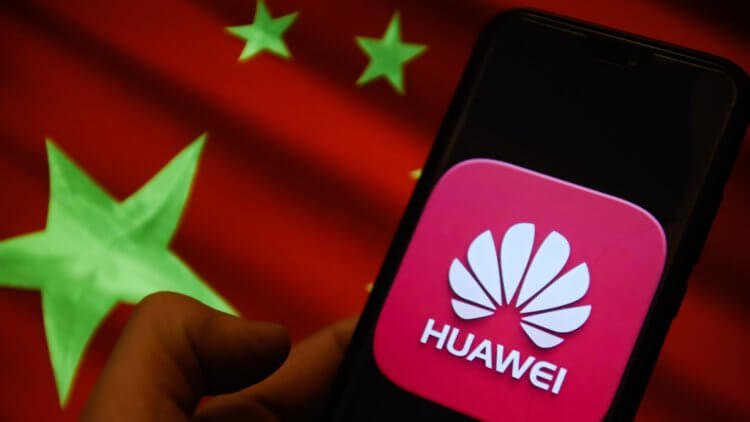
Huawei is ready to compete with Google on equal terms. For this she has everything she needs
In addition to a sharp defense, a sharp attack in the direction of the United States followed. Company representatives said that the United States needs to pay attention to itself, since it is they who monitor users of networks and equipment around the world.
“As evidenced by the Snowden leaks, the United States secretly gains access to telecommunications networks around the world by monitoring other countries for some time,” the company said in a statement.
It is also reported that Huawei has not only been accessing users' equipment and devices recently, but has been doing so for the past ten years.
“We have evidence that Huawei has the ability to access confidential and personal information in the systems it operates and sells around the world,” said National Security Advisor Robert O'Brien.
Unfortunately, no specific “names” have been sounded, and we do not know which operators and in which countries were exposed to the danger that the US government officials say, but it is reported that this began with the introduction of 4G equipment.
As you can see, Huawei does not want to give up and does not admit the accusations, which are, to put it mildly, strange. We do not see any evidence, but we only get accusations of the Chinese manufacturer that he is spying.
At the same time, representatives of the company assure that such surveillance is, in principle, impossible and many operators agree with them. If you believe them, then any attempt to gain access to the equipment will be immediately detected.
After all, if it's so simple, and even if you can get easy access to telecom operators' data through the backdoor, why can't attackers do it? They are also not fools, but as hackers do not fight, and the networks of operators and their work are considered one of the most secure systems.
Who is right? Perhaps someday we will find out, but so far there is only undercover fuss, from which few of us will benefit. Therefore, I want it all to end sooner, the guilty (if any) were punished, and we got back fair competition without administrative leverage.
Essential Phone no longer exists
Many people at one time praised the smartphone created by the father Android Andy Rubin. The public not only praised him for the fact that he was essentially the first frameless smartphone in the understanding of that time, but also for the fact that he had to be something out of the ordinary, if such a person took on the creation and almost for the sake of this one left the previous post. In fact, everything turned out to be a little different. At first, the smartphone sold poorly, then sales sagged even more, all this was accompanied by scandals, and in the end everything came to what we now have. And we have the end of this manufacturer. Why did this happen and could something be changed?
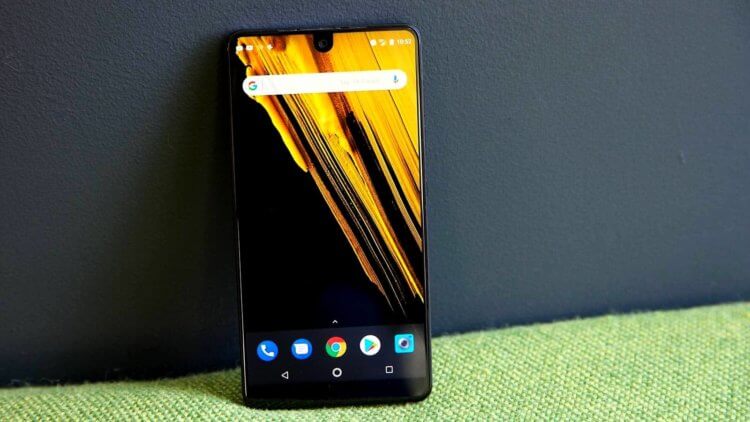
This smartphone will remain the last for the company.
In literal translation, the name of the company Essential, which migrated to the name of the smartphone, means “Essential”. There is an opinion that how you name the ship, so it will float. Apparently, Andy Rubin thought so too, but in reality it turned out to be another “Trouble” instead of “Victory”.
Nowadays, it is not logical to enter the market with one smartphone model and try to conquer it, no matter how cool a manager you are and no matter what merits you have in the past. All this pales against the background of the money invested in this process by corporations like Samsung, Apple, LG, Huawei and others. Even BBK, which was able to bring OnePlus to the market and make it the idol of many millions of users, could afford to take the time to swing, then gradually rise to the top level. Such market players can afford to work even at a loss if they do it for the long term.
Moreover, many Chinese companies have a certain head start in the face of a couple of billions of fellow citizens who, despite their love for iPhone, are ready to support their own. As a result, market entry is smoother and more confident.
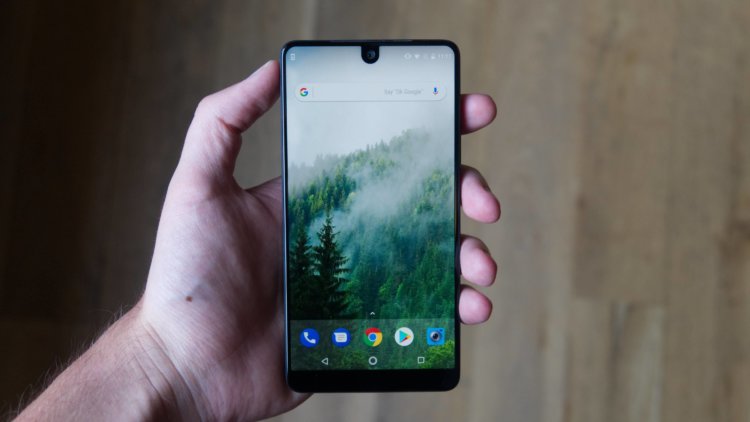
Many people liked him.
The first Essential smartphone was called the Essential Phone PH-1 and debuted in 2017. The planned success was based on high quality hardware and clean software without unnecessary shells and unnecessary bells and whistles.
At first, it all looked very nice and many wanted to get this smartphone, but after the first reviews were released, everything fell into place, and users began to be disappointed in the new product. Now the company has come to its logical conclusion and has released the latest update for its devices.
The last update came out on February 3rd. Smartphones will of course work, but not only will not receive the update to Android 11, but even the security updates.
Instead of pushing the updates for a few more months, the Essential Phone software updates are coming to an end. The February 3rd security update released earlier this month will be the last update PH-1 will ever receive, eliminating the possibility of official updates for Android 11 or additional security fixes. Only unofficial builds will be available and may be delayed significantly.
To support users, the manufacturer promised to post on its website all the necessary materials that will allow them to more or less fully continue to use their smartphones.
In general, we can say that the creators of Essential are still great, as they have provided support for the smartphone for almost three years. For Android smartphones this is a very long time. Previously, this was only seen in Apple. This approach should be taken into account by other manufacturers of smartphones.

This is also the brainchild of Essential, but it never came out.
In the history of the company, you can recall an interesting smartphone GEM. True, he never came out. However, there were leaks about him that indicated his unusual shape.
It had to be elongated and at the same time compact. That is, it would not be the Xperia 1, but it could be a good alternative to modern devices and add a little variety to the boring feast of the same type of smartphones. It is a pity that it did not grow together with him.
Surely Andy Rubin will come up with some new project for himself, but the current situation once again made it clear that one person, only due to his name, will not be able to pull out a large project to create a smartphone. The times are not right. Romance doesn't work anymore.
MWC'2020 exhibition in Barcelona canceled due to coronavirus
The main theme of this year, which has not lost its momentum to this day, is definitely the coronavirus. It has already caused serious damage to many companies, including Apple, which, due to the scale of its business, was almost the worst. She was forced not only to indefinitely close all her stores in China in order to prevent the spread of the disease, but also to curtail production. As a result, many goods were simply in short supply, and there is practically no chance of replenishing it. It would seem, what could be worse? But, as it turned out, maybe.

Coronavirus is hindering technology development, and it's not just words
The GSM Association, which organizes the Mobile World Congress in Barcelona, has decided not to hold an exhibition this year. The Chief Executive Officer of the association, John Hoffman, told the Financial Times. According to him, the outbreak of the coronavirus made it impossible to hold the event, so the organizers reluctantly abandoned it. The refusal to hold the exhibition was quite unexpected, because a few days ago it was stated that the organizers would take all the necessary security measures, but the exhibition would take place.

2020 was the first year when the MWC decided not to conduct in principle
Taking into account the safe and healthy atmosphere of Barcelona and the host country, the GSM Association has decided to cancel the MWC'2020 due to the threat of a new coronavirus outbreak. Problems with ensuring the personal safety of visitors, their moving and other circumstances make it impossible to hold the event. However, next year everything will go according to plan and MWC'2021 will take place in Barcelona on schedule, the organizers of the exhibition said.
However, even if MWC'2020 had gone according to plan, it would not have been as interesting as originally planned. Indeed, since the end of January, major brands have begun to refuse to attend the exhibition, fearing the coronavirus. In particular, Amazon, Ericsson, Intel, LG, MediaTek, Nvidia, Sony, Vivo, Facebook, AT&T, Telus и Nokia. Some other manufacturers have announced that they will not hold their presentations at the MWC, but will do so in the online stream format. Despite this, it was promised that the exhibition stands will function, and everyone will be able to come to them to talk with the brand representatives and look at the latest technological innovations and prototypes, which are currently being developed.
In fact, MWC is such a large and significant event for the mobile technology industry that its refusal to hold it, obviously, greatly undermined the plans of corporations. The fact is that many brands have used it precisely as a platform for presenting new products. For example, Xiaomi in the past few years has been presenting branded flagships at MWC, and this year it was forced to voluntarily abandon a physical presentation in favor of an online broadcast. But since there will be no MWC, this may make it difficult to distribute test samples of the new product. And by the time journalists and IT observers get it in their hands, the hype will subside a little and, obviously, interest in the new Xiaomi Mi 10 will not be so great.
On the other hand, the cancellation of the MWC was quite expected. Some journalists who were invited to the exhibition were seriously going to refuse the trip even before its official cancellation, because they feared that some of the visitors would probably be sick with coronavirus, which means they could pass it on to them. By their own admission, they were even ready to sacrifice tickets and paid hotel reservations, just to protect themselves from illness. After all, your own life and health are much more important than an interesting material or a review.
Samsung introduced new smartphones series Galaxy S20
Samsung holds an Unpacked showcase every year to showcase new products. And this time nothing has changed. The Koreans on February 11 at 22:00 Moscow time presented a number of new products as part of Unpacked 2020. The main novelties were the new flagships Galaxy S20, Galaxy S20 + and Galaxy S20 Ultra.
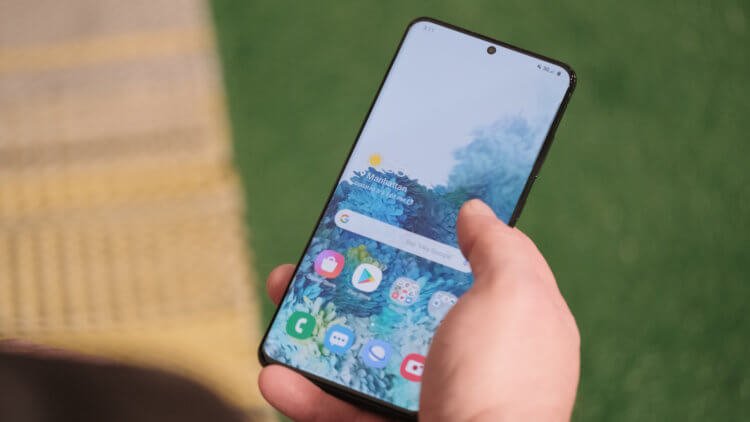
Results of Samsung Unpacked 2020
In the new line, the company has improved all parameters. It has cool cameras, more modern design, better performance. The most noticeable difference for many will be the non-standard name. Samsung decided to jump from the S10 to the S20 this year. The company claims that the reason for this is a large number of changes in the new generation, but in reality it is rather a marketing ploy, so that the name of the generation of flagships is consonant with the year it came out. And such a solution, in my opinion, is correct and convenient.
Let's go over the characteristics. Galaxy S20 Ultra is equipped with 6.9-inch display, 5000 mAh battery, 12/16 GB of RAM and 128/512 GB of internal storage, S20 received a 6.7-inch screen, 4500 mAh battery, 12 GB of RAM and 128/512 GB of internal memory. The regular S20 was equipped with a 6.2-inch display, a 4000 mAh battery, 12 GB of RAM and 128 gigabytes of internal memory.
All 3 smartphones offer consumers 5G a modem as standard, while in some regions the company may offer S20 with 4G. Most likely, Russia will be included in the number of such regions. Also an unpleasant moment for US residents will be the lack of mmWave support in the cheapest S20.

Samsung Galaxy S20 Ultra
In terms of cameras, the S20 and S20 Plus are very similar. They received a 12-megapixel wide-angle sensor with a pixel size of 1.8 microns and an aperture of F / 1.8, a 64-megapixel telephoto camera with an aperture of F / 2.0, another 12 megapixel wide-angle sensor, but with an aperture of F / 2.2, as well as a 10- MP front camera with f / 2.2 aperture. Both phones support 3x optical and 30x program zoom, which has been marketed as Super Resolution Zoom. Another cool feature is shooting in 8K!

The only difference between the S20 Plus and the S20 in terms of cameras is the additional ToF sensor, which is responsible for the depth map. The situation is more interesting in the case of the S20 Ultra. The phone offers a 108MP F / 1.8 module, a 48MP module with an F / 3.5 aperture, a 12MP wide-angle module with an F / 2.2 aperture and a 40MP front camera with an F / 2.2 aperture, which is due to pixel binning the output produces high quality 10-megapixel images. Ultra will offer owners 10x optical zoom thanks to its periscope design, as well as 100x digital Super Resolution Zoom.
The S20 Ultra uses pixel binning technology, when several pixels – in this case, 9 – are combined into one, and the output is a photo with a lower resolution, but of higher quality. The S20 Ultra will deliver high quality 12MP images with this technology.
A pleasant bonus for S20, S20 Plus and S20 Ultra owners will be displays with a refresh rate of 120 Hz and a touchscreen with a refresh rate of 240 Hz, similar to iPhone. Gamers will not be left out either. Samsung in the new products uses the function of smart unloading applications from memory. If you are playing PUBG Mobile and then switch to another app, the system will not unload the game from memory under any circumstances.
The US version of the S20 will be powered by the Snapdragon 865 processor, and the Exynos 990 version will also be sold in some countries. The S20 and S20 Plus come with 25W fast charging, while the S20 Ultra offers 45W charging. You will have to pay $ 50 extra for fast charging in Ultra, keep in mind.
The situation is interesting here. Smartphones have become slightly more expensive than last year's models. So, the Galaxy S20 is priced at $ 999, the S20 Plus will be priced at $ 1199 for the version with 12 GB of RAM and 128 GB of internal storage, and the S20 Ultra decided to estimate $ 1399 for the version with 16 GB of RAM and 128 GB of internal storage. The company did not disclose the cost of the S20 Plus and S20 Ultra in 512GB versions.
New items can be pre-ordered on February 21, and sales will start on March 6.

Samsung Galaxy Buds Plus
Together with the new flagships, Samsung introduced the Galaxy Buds Plus. These are the upgraded TWS earbuds. The company has improved the autonomy, now the headphones will be able to work for 11 hours (6 hours for regular Buds), and the case will give an additional charge cycle. The total is 22 hours of listening to music. Samsung has also improved its charging speed. Now 3 minutes is enough to offer the user 1 hour of use. Galaxy Buds took 15 minutes for 100 minutes of listening, for example. Also a nice bonus will be IPX2 protection, improved microphone quality, the ability to connect to two devices at the same time.
Headphones will go on sale on February 14th in black, white, blue and red, priced at $ 149.
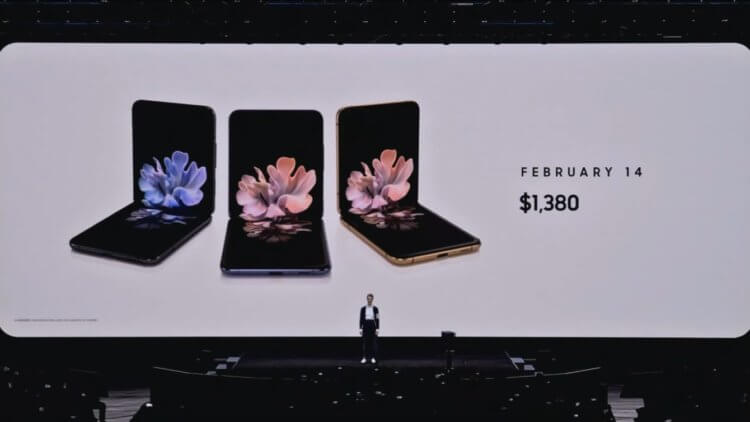
Samsung Galaxy Z Flip
This, in my opinion, is the most interesting novelty of the presentation. Z Flip is a foldable smartphone with a horizontal folding mechanism similar to the Motorola Razr. It offers 6.7 “Dynamic AMOLED – 2636 x 1080 display, optional 1.1” Super AMOLED – 303 ppi screen, Snapdragon 855 Plus processor , 8GB of RAM and 256GB of storage, 3300mAh battery with 15W fast charging and 9W wireless charging. It has two 12-megapixel camera modules and a 10-megapixel front camera. The device weighs 183 grams.

Samsung has used a special hinge in the new product, allowing the phone to be used in an intermediate state for selfies and easier navigation. You can, for example, launch one application on one half of the screen, and another on the other. Alternatively, you can use the other half as a trackpad.
The Z Flip will retail for $ 1,380 starting February 14th.
Which new product did you like the most? Share your opinion in the comments and don't forget about our Telegram.
